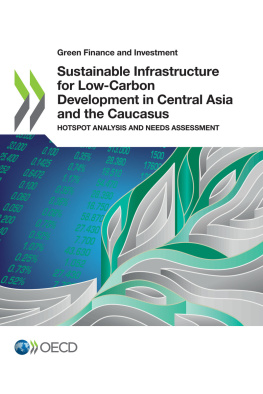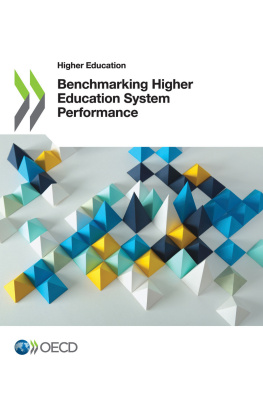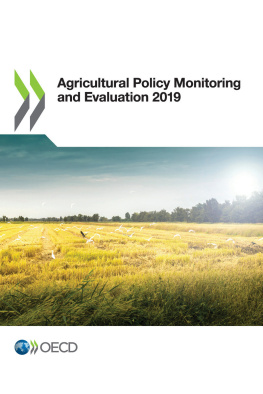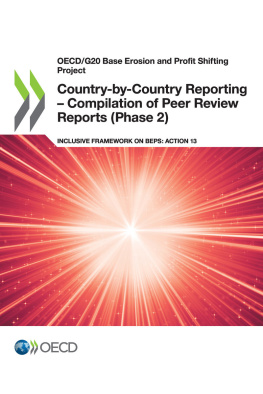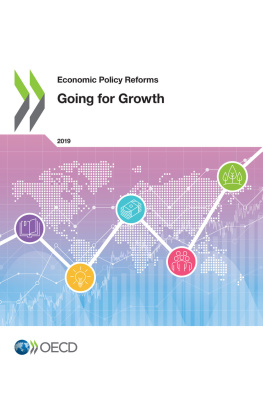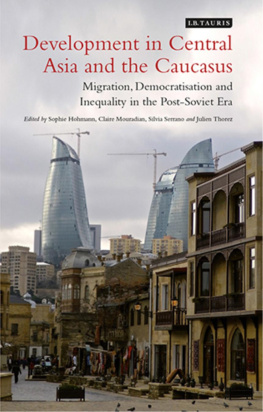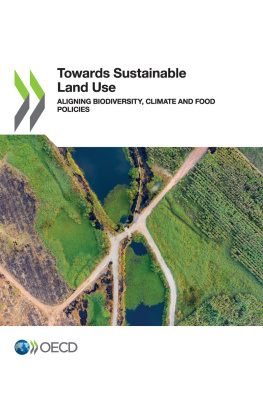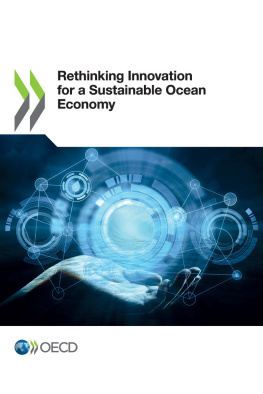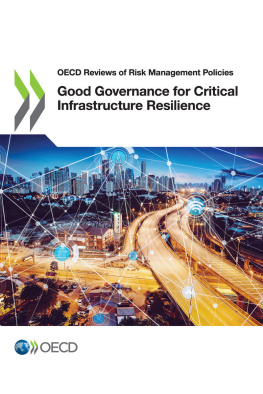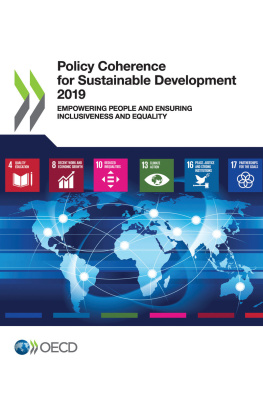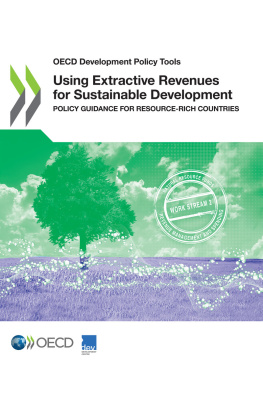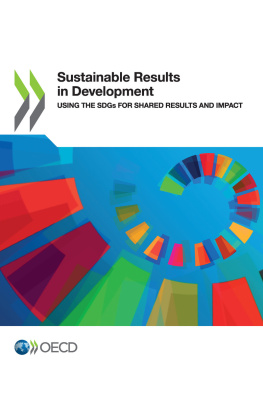OECD - Sustainable Infrastructure for Low-Carbon Development in Central Asia and the Caucasus
Here you can read online OECD - Sustainable Infrastructure for Low-Carbon Development in Central Asia and the Caucasus full text of the book (entire story) in english for free. Download pdf and epub, get meaning, cover and reviews about this ebook. year: 2019, publisher: OECD Publishing, genre: Politics. Description of the work, (preface) as well as reviews are available. Best literature library LitArk.com created for fans of good reading and offers a wide selection of genres:
Romance novel
Science fiction
Adventure
Detective
Science
History
Home and family
Prose
Art
Politics
Computer
Non-fiction
Religion
Business
Children
Humor
Choose a favorite category and find really read worthwhile books. Enjoy immersion in the world of imagination, feel the emotions of the characters or learn something new for yourself, make an fascinating discovery.
Sustainable Infrastructure for Low-Carbon Development in Central Asia and the Caucasus: summary, description and annotation
We offer to read an annotation, description, summary or preface (depends on what the author of the book "Sustainable Infrastructure for Low-Carbon Development in Central Asia and the Caucasus" wrote himself). If you haven't found the necessary information about the book — write in the comments, we will try to find it.
OECD: author's other books
Who wrote Sustainable Infrastructure for Low-Carbon Development in Central Asia and the Caucasus? Find out the surname, the name of the author of the book and a list of all author's works by series.
Sustainable Infrastructure for Low-Carbon Development in Central Asia and the Caucasus — read online for free the complete book (whole text) full work
Below is the text of the book, divided by pages. System saving the place of the last page read, allows you to conveniently read the book "Sustainable Infrastructure for Low-Carbon Development in Central Asia and the Caucasus" online for free, without having to search again every time where you left off. Put a bookmark, and you can go to the page where you finished reading at any time.
Font size:
Interval:
Bookmark:
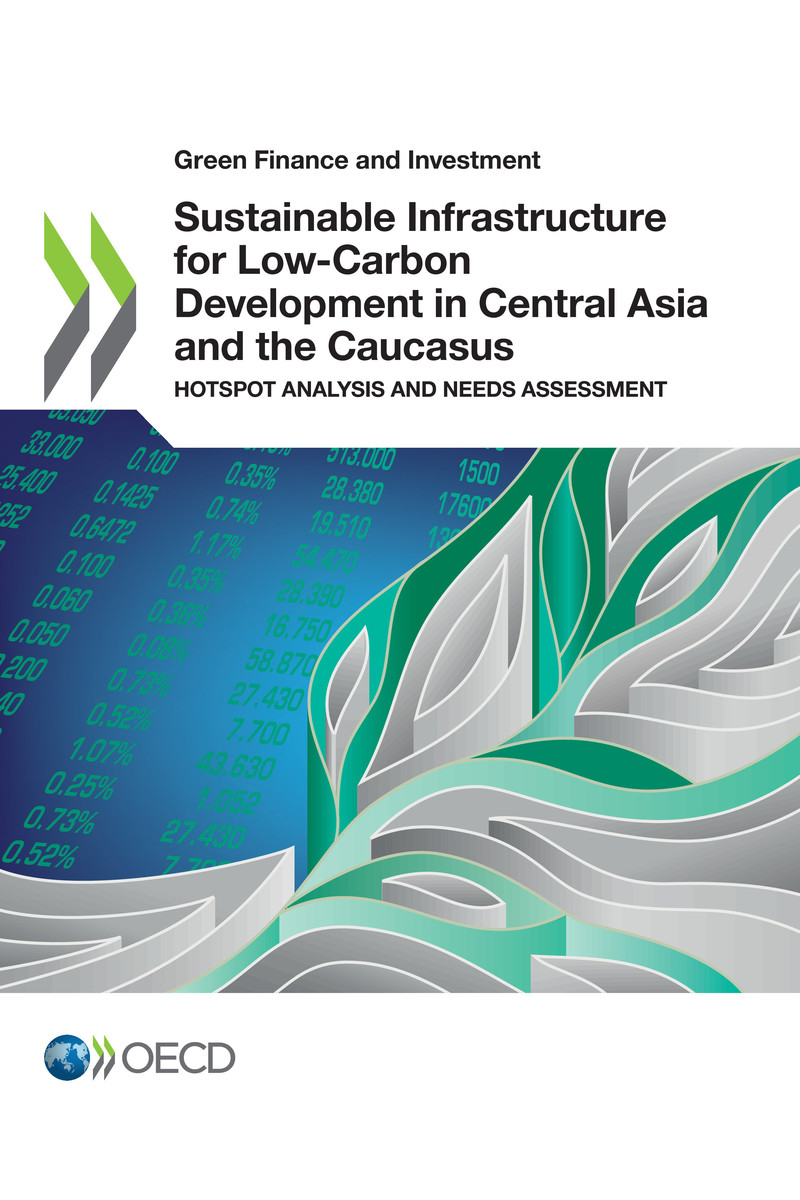
OECD (2019), Sustainable Infrastructure for Low-Carbon Development in Central Asia and the Caucasus: Hotspot Analysis and Needs Assessment , Green Finance and Investment, OECD Publishing, Paris, https://doi.org/10.1787/d1aa6ae9-en .
The information in this document with reference to Cyprus relates to the southern part of the Island. There is no single authority representing both Turkish and Greek Cypriot people on the Island. Turkey recognises the Turkish Republic of Northern Cyprus (TRNC). Until a lasting and equitable solution is found within the context of the United Nations, Turkey shall preserve its position concerning the Cyprus issue.
The Republic of Cyprus is recognised by all members of the United Nations with the exception of Turkey. The information in this document relates to the area under the effective control of the Government of the Republic of Cyprus.
This project is part of the International Climate Initiative (IKI). The Federal Ministry for the Environment, Nature Conservation and Nuclear Safety (BMU) supports this initiative on the basis of a decision adopted by the German Bundestag.
This report has been compiled within the GIZ program Capacity Development for climate policy in the countries of South East, Eastern Europe, the South Caucasus and Central Asia, Phase III
As a service provider with worldwide operations in the fields of international cooperation for sustainable development and international education work, GIZ works together with its partners to develop effective solutions that offer people better prospects and sustainably improve their living conditions. GIZ is a public-benefit federal enterprise and supports the German Government and a host of public and private sector clients in a wide variety of areas, including economic development and employment promotion, energy and the environment, and peace and security.
This report was prepared under the supervision of Kumi Kitamori and Virginie Marchal. The lead authors were Douglas Herrick, Alin Horj, Virginie Marchal and Andrei Smirnov. The report was prepared for publication by Lupita Johanson.
The report was presented at the 2019 Annual Meeting of the GREEN Action Task Force and benefited from comments from the members of the GREEN Action Task Force, the OECDs Environment Directorate and Global Relations Secretariat under the Office of the Secretary General, GIZ, the Development Bank of Kazakhstan, the State Agency on Environmental Protection and Forestry of the Kyrgyz Republic, the Ministry of Economic Development and Trade of the Republic of Tajikistan, the Interstate Commission on Sustainable Development of Central Asia and the Ministry of Economy and Industry of the Republic of Uzbekistan.
This report presents key findings from an analysis of the strengths and weaknesses of existing institutional frameworks for strategic planning of sustainable infrastructure in eight countries of Central Asia and the Caucasus (Azerbaijan, Georgia, Kazakhstan, the Kyrgyz Republic, Mongolia, Tajikistan, Turkmenistan and Uzbekistan). It also provides an inventory of infrastructure projects, both planned and under construction, in the region, with the objective of assessing the extent to which infrastructure plans are consistent with long-term development, climate and environmental objectives.
Chapter 1 provides an overview of the challenges and opportunities related to infrastructure investment in the region.
Chapters 2 to 9 present country profiles that consist of three components:
a rapid assessment of the challenges and opportunities related to investment, climate and infrastructure;
an analysis of hotspot infrastructure projects, which are defined as infrastructure projects (planned and under construction) with potentially high environmental, social and economic impacts;
an overview of strengths and shortcomings in the existing framework for strategic infrastructure planning.
Due to limited data availability, the data points for the eight countries included in the present study are not always comparable. The authors have included the most recent data points available and, as much as possible, have used the same sources for each sector. When possible, other data points were included from national statistics offices from the most recent year available.
Methodology: building the database of infrastructure projects
The analysis draws on a database of infrastructure projects compiled by the OECD. The database covers eight countries (Azerbaijan, Georgia, Kazakhstan, the Kyrgyz Republic, Mongolia, Tajikistan, Turkmenistan and Uzbekistan) and five sectors:
Transport (including airports, roads, railways, multimodal transportation hubs, transportation and logistics centres).
Energy (including projects related to electricity generation, electric power transmission and distribution, upstream oil and gas, oil and gas pipelines).
Industry (including manufacturing projects related to iron and steel production, cement plants, petrochemical plants, fabricated metal products, coke and refined petroleum).
Mining and quarrying (including of metal ores such as gold, chrome, copper, zinc, iron, tin, uranium).
Water (including water supply, water facilities, irrigation and drainage projects, rehabilitation).
The database covers infrastructure projects planned, under construction or completed in the period 2000 to 2018, and draws on the following sources of information:
International financial institutions and national development banks web sites : Asian Development Bank (ADB); Asian Infrastructure Investment Bank (AIIB); European Bank for Reconstruction and Development (EBRD); European Investment Bank (EIB); Black Sea Trade and Development Bank (BSTDB); China Export-Import Bank; Development Bank of Kazakhstan (DBK); International Monetary Fund (IMF); OPEC Fund for International Development (OFID); World Bank; Kreditanstalt fr Wiederaufbau (KfW).
Font size:
Interval:
Bookmark:
Similar books «Sustainable Infrastructure for Low-Carbon Development in Central Asia and the Caucasus»
Look at similar books to Sustainable Infrastructure for Low-Carbon Development in Central Asia and the Caucasus. We have selected literature similar in name and meaning in the hope of providing readers with more options to find new, interesting, not yet read works.
Discussion, reviews of the book Sustainable Infrastructure for Low-Carbon Development in Central Asia and the Caucasus and just readers' own opinions. Leave your comments, write what you think about the work, its meaning or the main characters. Specify what exactly you liked and what you didn't like, and why you think so.

